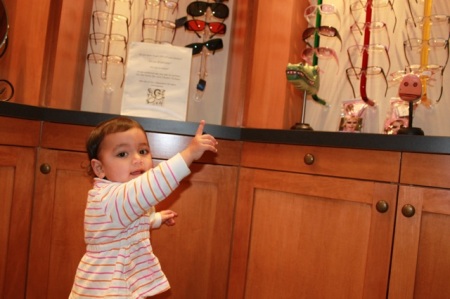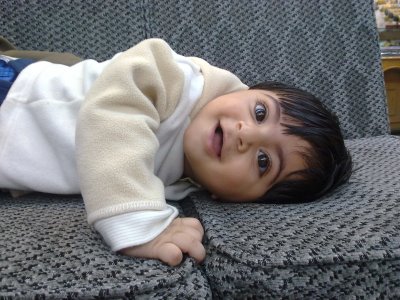New parents should be aware of how their child’s vision develops over time, and what is normal. Infants and young children don’t typically outgrow vision problems, but I’ve seen firsthand that the sooner these problems are treated the better chance they have of being fully corrected. So as soon as you suspect a problem, schedule an eye exam.

Parents are often surprised when I tell them their infant or toddler has one eye that sees really well and another that does not. Surely they would have noticed something was wrong or the child would have told them, right? They tell me their child can see the plane in the sky or the small pictures in their books so they know that their child can see. And the parents are right. If one eye sees well, the child will see well while both eyes are open. However, if we cover the ‘good’ eye, everything changes. Often the child’s behaviour even changes, because now they cannot see as well as they are used to and it is very disruptive to their functioning. They become fidgety, irritated, even angry until the good eye is uncovered. We cannot expect them to tell us why they react this way because they are too young to know the difference between good vision and poor vision.
This condition is called amblyopia and when it is diagnosed, the second thing I tell parents is that it is a great thing they brought their child in at a young age. The earlier it is detected the better the prognosis is with treatment. They probably just saved their child a host of difficulties that often come along with having a lazy eye, including difficulties with reading, learning, athletic performance and social confidence.
To help you better understand what normal vision should look like for your child, here is a basic outline of normal visual development that you can use to assess whether your child is developing properly at home:
0 – 6 Months
Your baby should be:
- following faces up, down, sideways, closer & farther
- turning toward noises at either side of their body
6 – 12 Months
Your baby should be:
- playing peek-a-boo
- rolling balls and following after them
- filling and emptying containers
- dropping toys or spoons and watching them drop
12 – 18 Months
Your toddler should be:
- scribbling on paper
- putting simple objects together, and fitting shapes into holes
18 – 24 Months
Your toddler should be:
- build towers and structures
- making it through an obstacle course of furniture, pillows, or a play area
- putting together nesting toys and moving hinges
2 – 3 Years
Your toddler should be:
- running, tumbling & climbing
- putting together simple, single shape puzzles
- drawing on paper
- classifying objects and colors
3 – 4 Years
Your child should be:
- dodging and throwing objects
- playing with hidden picture and similarities/differences puzzles
- playing with play-dough
- reading books with you

Are you noticing any developmental delays in your child’s eyesight, based on this outline?
You should take your baby in for their first eye exam before they are 6 months old if you notice any problems, and at 6 months even if you don’t notice anything, so that any problems have the best chance of being corrected.
I’ll be writing a follow-up blog post that will outline some strategies for you to help your baby develop their eyesight at home, and help to prevent future problems.
By Dr. Nazima Sangha of Family Eyecare Centre
